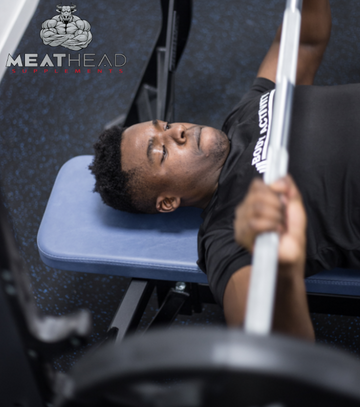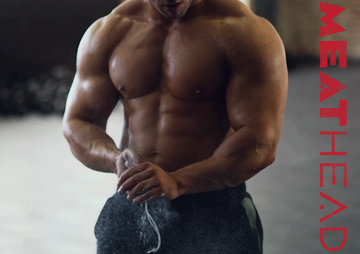There’s a point in every workout where you have to decide: Are you going to coast or grind? If you’re not consistently pushing your sets to failure, chances are you’re coasting more than you think. Let’s face it, building muscle and getting stronger isn't for the faint of heart. It’s not about just showing up to the gym and logging sets and reps — it’s about breaking your limits, and that’s where the concept of taking each set to failure comes in.
What Does "Training to Failure" Really Mean?
Training to failure means pushing your muscles to the point where they physically cannot perform another rep with good form. It’s that moment when your muscles are screaming, your heart is racing, and every fiber of your being is telling you to stop. This isn't just discomfort — it's complete muscular exhaustion. If you haven’t been there yet, you’re not going hard enough.
The Science Behind Going All-Out
When you train to failure, you're tapping into muscle fibers that don’t get recruited in regular sets. These are the deeper, more stubborn fibers that have the potential for real strength and size gains. Your body doesn’t build muscle for free. It only grows in response to a stimulus that forces adaptation. Hitting failure is the signal that tells your body, “Hey, we’re not strong enough to do this — we need to grow.”
Research supports this too. Studies have shown that sets taken to failure can result in greater hypertrophy (muscle growth) and strength compared to submaximal efforts. Training to failure maximizes the recruitment of motor units, increases metabolic stress, and enhances muscle protein synthesis — all of which are critical for growth.
The Mental Battle
Pushing to failure isn’t just a physical battle — it’s mental warfare. Your brain will tell you to quit long before your body actually has to. That’s why so many people stop shy of true failure. They’ll claim they “couldn’t do one more,” but if you dig deep, you’ll find you often have a few more reps in the tank.
The reality is that real progress lives outside of your comfort zone. To hit failure is to embrace the pain and push past the voice in your head that says “enough.” It’s ugly, it’s uncomfortable, but it’s the cost of leveling up.
Why Half-Repping Your Way Through Workouts Won’t Cut It
If you’re not taking your sets to failure, you're leaving gains on the table. Period. You can rack up as many sets as you want, but if you’re stopping short of failure, you're not forcing your body to adapt.
Too many people in the gym pride themselves on how many sets they do, but volume without intensity is like running on a hamster wheel — you’re moving, but you’re not going anywhere. It’s the quality of each set that counts. Intensity trumps volume every time. Sure, it’s easier to bang out 12 reps and stop when things start to burn, but if you’re serious about building muscle, those last painful reps are where the magic happens.
Training Smarter, Not Just Harder
Training to failure doesn’t mean reckless abandon. You still need to train smart. Take your compound lifts (squats, deadlifts, bench presses) seriously, but understand that taking these heavy lifts to failure can increase your risk of injury if form breaks down. Instead, reserve absolute failure for safer movements like machines, dumbbells, or isolation exercises, where control and form can be maintained without sacrificing safety.
That said, don’t baby yourself. You should still be pushing your big lifts to near-failure — that point where maybe one rep is left in the tank. Then when it comes to accessory lifts, hammer them until you can’t lift another inch.
Overtraining: The Myth
Some will say training to failure on every set leads to overtraining. Let’s be clear: overtraining is rare and takes months of insane volume without proper rest or nutrition. Most people who claim overtraining are just under-recovered because they aren't eating or sleeping right. If your nutrition and recovery are dialed in, your body can handle way more than you think.
The Bottom Line
If you're serious about building muscle and strength, stop coasting. Training to failure is brutal, it’s uncomfortable, and it’s exactly what you need to break through your plateaus. The body adapts when it’s forced to, and the only way to force it is by pushing beyond what you think is possible.
Next time you’re in the gym, ask yourself: Am I giving everything I have? If the answer is anything but yes, then it’s time to start taking your sets to failure. The results will speak for themselves.
For more tips, products, and gear check out www.Meatheadsupplements.com





